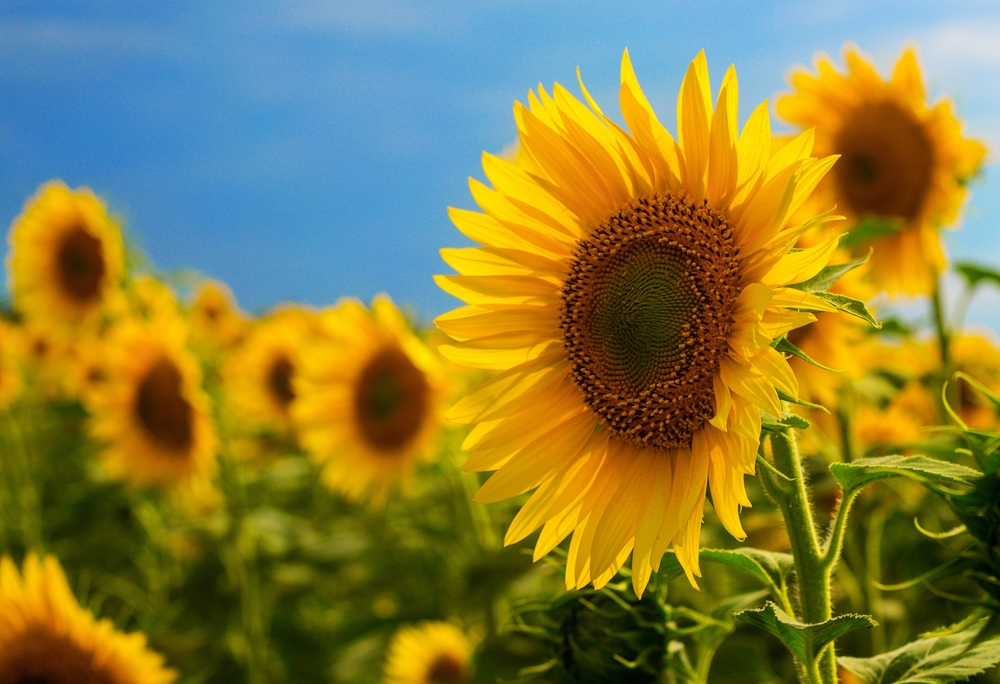As the RHS Chelsea Garden Show takes place in the coming weeks (20-24 May), many green-fingered Brits will be encouraged to spend more time in their garden and be inspired by the magnificent artwork during the show.
In fact, Pinterest searches for “garden decor” have increased by 80% in the last month in the run up to the much anticipated event.
While many Brits carefully nurture and grow fruit and veg from the comfort of their own garden, culinary experts from meal kit delivery service, HelloFresh, suggest that there might be more edible and delicious plants growing in your garden.
Mimi Morley, Senior Recipe Development Manager at HelloFresh said
“What could be fresher than fruit and veg grown in your own garden? Investing in your own outdoor space can not only support the environment, but also save you a pretty penny too.
“For gardening beginners, or even an experienced horticulturist, the importance of learning about how flowers can be used in cooking shouldn’t be overlooked when planning and planting your summer garden.”
Which garden flowers are edible?
According to the Royal Horticultural Society, there are 17 different types of edible flowers that could be growing in your garden, including lavender, sunflower, Chrysanthemum and elderflower. If you’re looking for ways to incorporate these tasty flowers into your dishes, Mimi explains the best ingredients to pair them with.
Lavender
The natural lavender scent helps us to unwind and feel relaxed, and the taste can have the same effect. This flower can be used in both sweet, and savoury cooking with its versatile taste.
Mimi comments,

“The leaves of the lavender are edible, and hold the strongest flavour. To create the perfect meat rub, combine coarse sea salt, and lavender buds in a bowl, using a pestle and mortar to blend the flavours together. This can be used in a number of roasted meat dishes, in particular a delicious leg of lamb.
“Or if you have a sweet tooth, lavender infused icing or honey makes a great topping for cakes, biscuits or other baked treats.”
Sunflower
While sunflower seeds offer a delicious nutty snack, there are other parts to the sunflower plant that shouldn’t be overlooked when it comes to cooking.
Mimi suggests boiling the leaves to reduce the intense flavour and adding them as a leafy green side dish, or baked to form crispy chips to sprinkle over a dish.
And don’t forget to add the bittersweet tasting petals to salads during the summer. Their bright and summery colour also acts as a beautiful garnish to your plate.
Chrysanthemum
The Chrysanthemum flower is perfect for making your own botanical and floral tea recipe. This flower is packed with vital nutrients and vitamins to support overall wellbeing, and your own tea recipe is quick and easy to make.
Mimi comments,
“Firstly, you’ll need to dry your Chrysanthemum flowers by hanging upside down and pinning to a clothesline or piece of string, in a dark, dry, well-ventilated area. This can take 2-3 weeks to fully dry out.
“Once the flowers are dry, boil your kettle and place 4-5 buds per serving into a teapot, depending on how intense you want the flavour to be. Pour your hot water over the flowers and allow to brew for 3-5 minutes. You can either remove the flowers, or leave them in for a stronger taste. Add honey, or sugar to sweeten the taste to your liking. The Chrysanthemum tea has a flavour similar to Chamomile, with a mild floral taste.”
Elderflower
Perfect for a refreshing drink on a hot summer’s day, the elderflower taste is mild, sweet and herby.
If you’re lucky enough to have this plant growing in your garden, Mimi suggests elderflower is best added to sweet desserts to add an earthy flavour.
Mimi comments,
“One flavour in particular that blends together so well with elderflower is lemon. The choices of a sweet treat with these two refreshing flavours are endless!
“But the best way to make sure you get the most out of your elderflowers is to make your own infused syrup, which can then be added to a number of sweet, and summery drinks and desserts.
“To make this dish at home, you’ll need water, granulated sugar and elderflower heads. Heat together the sugar and water until the combination reaches boiling point, and the sugar has dissolved. Next, remove from the heat and add the elderflower heads and allow the mixture to sit for 10-20 minutes.
“Once cool, pour through a sieve and store in an airtight container, your syrup should be good to use for up to a month in a number of different sweet recipes.”
How Herbs and Salad Plants Help Support Bees and Other Pollinators